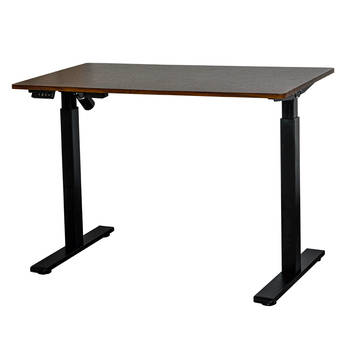What Causes Back Pain in Long-Term Office Workers?
Long-term office workers often suffer from back pain due to prolonged sitting. When sitting, the lumbar spine bears about 140% of the body's weight—far more than the 100% when standing. This extra pressure makes the lumbar muscles stay in a tense state for a long time, leading to muscle fatigue and soreness over time. Additionally, incorrect sitting postures (such as hunching, crossing legs, or leaning forward too much) further increase the burden on the intervertebral discs and back muscles. Over time, this can lead to chronic back pain, and in severe cases, even herniated intervertebral discs.
How Can Stand Up Office Desks Alleviate Back Pain?
Does Standing Reduce Lumbar Spine Pressure?
Yes, standing can significantly reduce lumbar spine pressure. Studies show that when switching from sitting to standing, the pressure on the lumbar spine drops by about 30%. This reduction gives the tense lumbar muscles a chance to relax, relieving muscle fatigue and soreness. For office workers who sit for 6-8 hours a day, using a stand up desk to alternate between sitting and standing can avoid the continuous pressure on the lumbar spine, thereby reducing the risk of back pain.
Can Stand Up Desks Improve Posture to Relieve Pain?
Standing naturally encourages better posture. When using a stand up office desk, most people will unconsciously straighten their backs, lift their heads, and relax their shoulders—unlike sitting, where it’s easy to slump or hunch. Correct posture ensures that the back muscles, intervertebral discs, and ligaments bear weight evenly, avoiding excessive tension on local muscles. Over time, maintaining good posture through stand up desks can not only relieve existing back pain but also prevent the occurrence of new pain.
Are There Limitations to Stand Up Desks for Relieving Back Pain?
Will Prolonged Standing Cause New Discomforts?
Prolonged standing (more than 4 hours at a time) can bring new problems instead of relieving back pain. Continuous standing increases the pressure on the legs and feet, leading to leg fatigue, swelling, and even varicose veins in the long run. Moreover, if standing posture is incorrect (such as leaning to one side or locking the knees), it may cause new tension in the lower back muscles, offsetting the pain-relieving effect.
Is Alternating Between Sitting and Standing More Effective?
Experts recommend alternating between sitting and standing every 30-45 minutes—this is the most effective way to use a stand up office desk for back pain relief. For example, sit for 40 minutes, then stand for 30 minutes, and repeat. This cycle ensures that neither the lumbar spine nor the legs bear excessive pressure for a long time. It also keeps the back muscles in a state of "alternating relaxation and tension," which helps maintain muscle flexibility and reduce pain.

 English
English 中文简体
中文简体 日本語
日本語 한국어
한국어 Español
Español
 Language
Language












